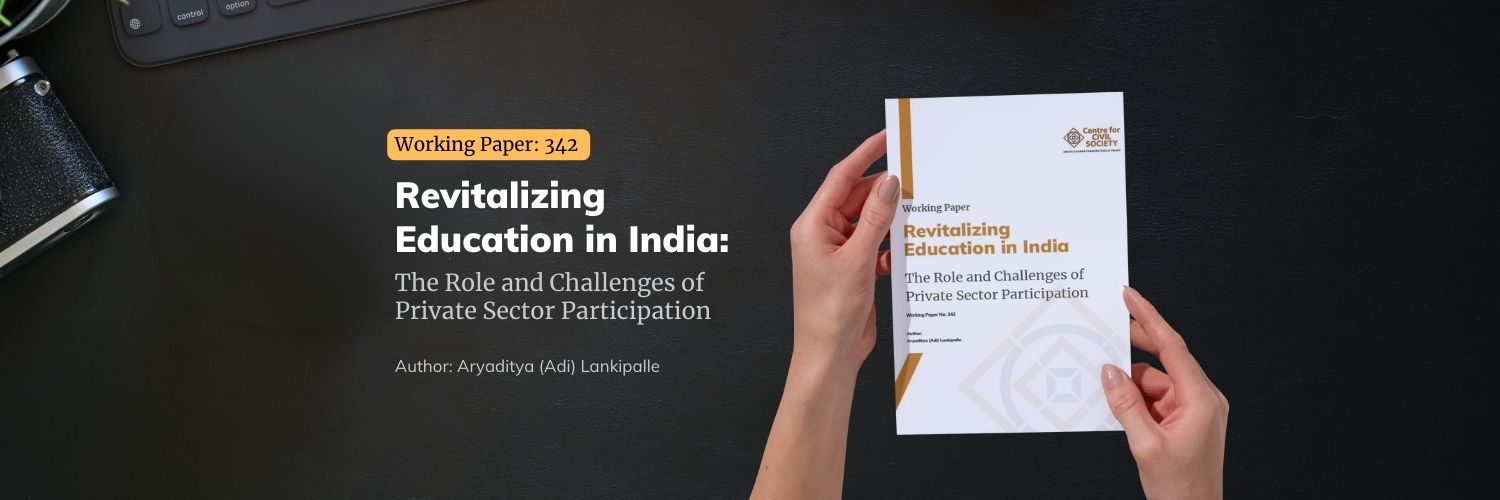"COVID-19 took the world by shock. What started as a small infection has spread across several countries, inflicting harm to millions of people and setting the global economy back by decades. As of September 2020, India adds close to 100,000 COVID-19 cases per day. Economists estimate the real Gross Domestic Product (GDP) growth to contract by at least 10.5% for 2021 (C. Kumar 2020). Q1 GDP numbers show a GDP fall of close to 24% (Jebraj 2020). Unemployment in the country in the third week of September has risen to 7.2% (Centre for Monitoring Indian Economy 2020). Over 45% of households have reported a drop in income (Virmani 2001).
COVID-19 has made apparent the need for changes in the way the government regulates various sectors. The Indian economy is haunted by what Ekstein (2015) calls regulatory inertia and many laws that have outlived their purpose. Crises have frequently provided opportunities for reforms. Ranciere (2015) found that large-scale structural reforms occur “in bad times rather than during prosperous times”. The liberalisation of 1991, for instance, was motivated by a balance of payments crisis (Centre for Policy Research 2020).
During the summer of 2020, we at Centre for Civil Society documented how some critically affected sectors are trying to adapt to the changing circumstances, but are fettered by the regulatory framework. We examined seven areas: health, education, labour, agriculture, technology enterprises, philanthropy, and professional certification.
All the areas of study were seemingly disparate. We used a common lens to examine the regulations in each of the areas of study and discovered that at the heart of it our regulations are not fit for purpose. In some areas, the regulatory framework is absent or muddled; in other areas overwrought. And in yet other areas, they are ambitious, but out of sync with state capacity. They are outmoded for the new reality across the board. Most of these are legacy issues, but these gaps have become stark during the pandemic.
Our regulations across sectors favour incumbents over disruptors. The regulations create
strong barriers to innovation and adaptability. For instance, e-pharmacies have been operating in a vacuum, absent clarity on their obligations and liabilities. While a draft set of rules to regulate epharmacies was published in 2018, they are yet to be notified. This stasis is partly a result of the pressure campaigns from brick-and-mortar pharmacies. Deploying new rules requires jettisoning some pillar ideas such as the role of pharmacists in gate-keeping drug sales. The lockdown made the demand for door-step delivery of drugs significant, but the rules of the game are yet to change.
Regulations are also susceptible to capture and monopoly. Professional certification requirements for lawyers do not recognise distance learning. This has hurt the ability of law schools to use new modes of teaching. The Bar Council, in a bid to restrict entry and increase wage premiums, has made it hard to imagine new ways of bringing legal professionals into service.
The regulatory architecture often favours a one-size-fits-all approach. For example, where democratising education may allow non-traditional learners to prosper, the regulations encourage standardisation and uniformity. Options for school exit-certification make it hard to exercise choice and to experiment with what works for parents and their children. Most Boards in India do not allow independent learners to be certified. The government did create the National Institute for Open Schooling, but it is reputationally not at par with other boards, nor is it able to offer the kind of quality curriculum that learners now demand.
Regulators in India also capitulate to public perceptions over empirical data, sometimes even making it hard to generate evidence critical for decision-making. The regulatory framework for seeds does not make it easy for technology developers to conduct, field trials before making biosafety determinations. States have to issue No-Objection Certificates for testing GM seeds. Demanding that we meet thresholds of scientific evidence is not unreasonable, but it is not clear who we are helping when the government requires No-Objection Certificates to even engage in scientific discovery. Even though farmers across the country are slowly being freed from the license permit-subsidy raj, they remain hostage to an aversion to modern science.
A regulatory framework that is ambitious but fettered by State capacity constraints
can do more harm than good. Labour regulations across the country have been the subject
of shrill debate for years. As we have watched our neighbours take advantage of their periods of demographic dividend, we have remained a prisoner of overwrought rules on every aspect of employing workers. During COVID-19, many states have tried to quickly tinker with labour regulations to make them flexible enough to generate mass employment. Yet, as states try to break free, the Centre’s laws hold them back.
Contrastingly, where State's capacity to regulate may be limited, the market has shown us new ways to set standards and enforce rules. Door-step delivery of food via aggregator platforms has brought us market-led regulation of hygiene and safety. Food aggregators were steps ahead of the country’s food regulator in setting standards and using technology to enforce those standards. Aggregators were able to anticipate that customers would pay a premium for hygiene over time, and intermediaries could help bridge the information gap between customers and suppliers on hygiene parameters. They were able to quickly deploy systems to monitor standards, and build feedback loops for improving performance: something the food regulator has struggled to do.
Regulations that hamper innovation and create incentives for incumbents to stagnate, hurt the creative destruction process that is at the heart of generating growth and value. Creative destruction is the continuous and deliberate process of replacing outdated production processes with newer methods of anticipating and meeting consumer needs (Kopp 2019). It is the process of creating new industries that never before existed, like the railroad in the 19th century or the internet today (Alm and Cox 2020).
Through this compendium, we hope to make the case for first-principles thinking in writing the rules of the game. In each paper, we have tried to identify the challenges of the current regulations, and in some cases suggested models for reform.

Revitalizing Education in India: The Role and Challenges of Private Sector Participation
Working Paper no. 342


